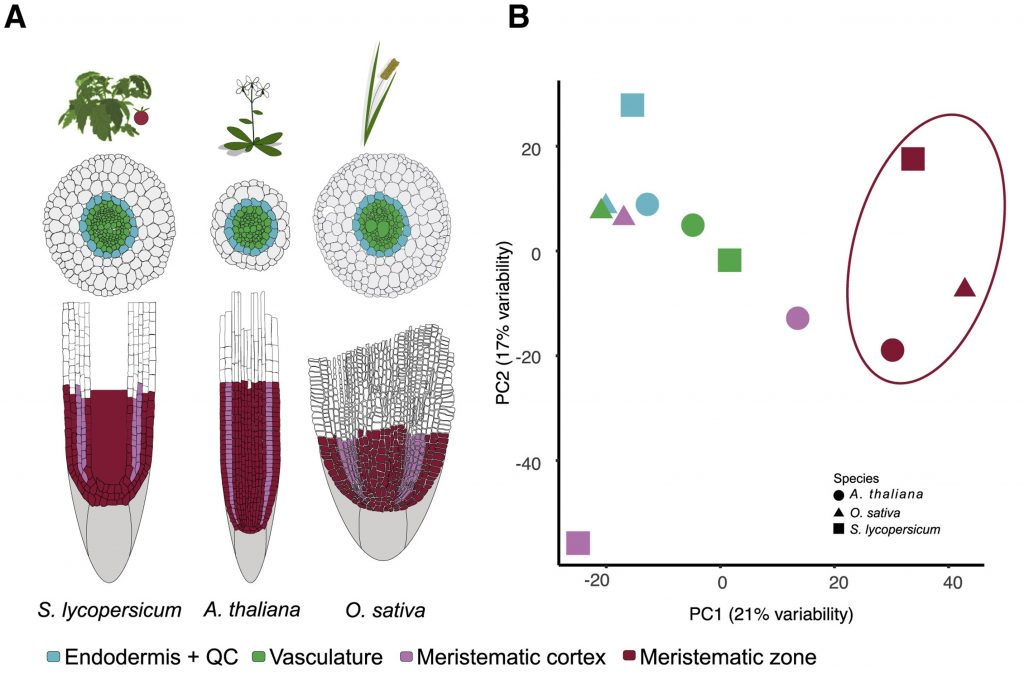
Innovation, conservation, and repurposing of gene function in root cell type development (Cell)
Plant Science Research WeeklyPlants demonstrate a gorgeous diversity in cell types to adapt to their unique environments. Certain cell types, such as the epidermal, cortex, and vascular cells within plant roots, or the classically-defined root developmental zones (meristematic, elongation, and maturation), are homologous in angiosperms.…
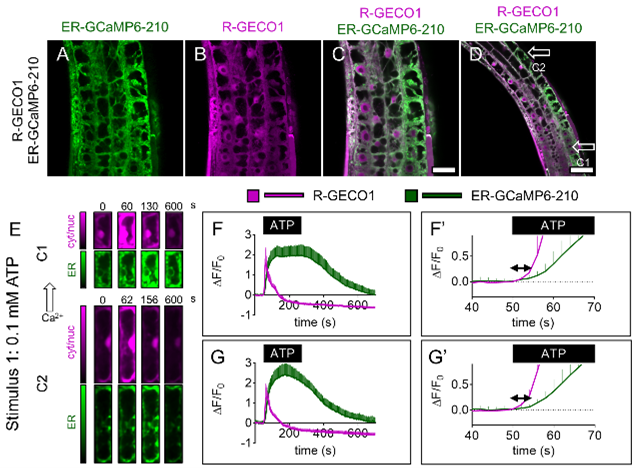
Waves of information: Simultaneous imaging of ER and cytosolic Ca2+ dynamics reveals long distance ER Ca2+ waves in plants (Plant Physiol.)
Plant Science Research WeeklyCalcium (Ca2+) signaling regulates a host of stress and developmental responses in plants. Apart from increases in cytosolic Ca2+ concentration ([Ca2+]Cyt.), organellar signals play a key role in shaping the cytosolic signaling events. In an attempt to understand the Ca2+ dynamics in the endoplasmic…
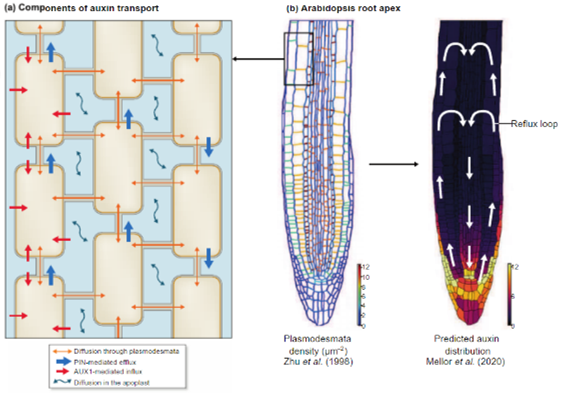
Review: Auxin fluxes through plasmodesmata (New Phytol)
Plant Science Research WeeklyPlasmodesmata, the tubular connections that form continua between neighboring cells in plants, play vital roles in long-distance transport of ions, RNA, proteins, and small molecules. While it is known that plasmodesmata are permeable to phytohormones, including auxin, the physiological significance…
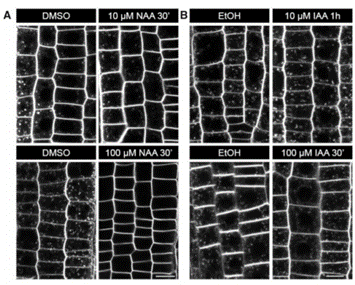
Trapped in traffic – redefining cellular responses to auxin pharmacology (Plant Physiol.)
Plant Science Research WeeklyUnderstanding cellular responses to the phytohormone auxin has always been a challenge and decades of work has constantly renewed our knowledge of the same. Here, Narasimhan and colleagues attempted to revisit and resolve the basis of differential action of naturally occurring auxin indole-3-acetic acid…

GABA signalling modulates stomatal opening to enhance plant water use efficiency and drought resilience (Nature Comms)
Plant Science Research WeeklyGamma-aminobutyric acid (GABA) is a non-protein amino acid produced by animals and plants, but is its function conserved across kingdoms? In mammals, GABA acts as chemical messenger in the central nervous system by inhibiting neurotransmission. In plants, GABA accumulates in response to stress but its…
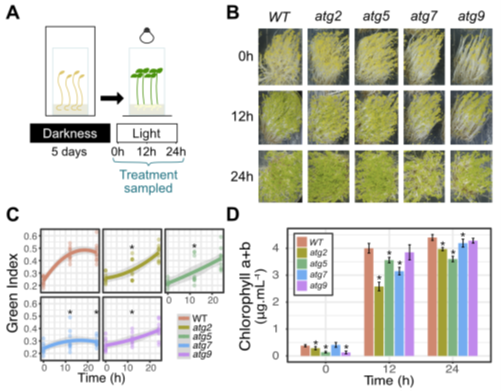
Autophagy promotes photomorphogenesis during seedling development (bioRxiv)
Plant Science Research WeeklyAutophagy is an intracellular evolutionarily conserved catabolic process that degrades cytoplasmic constituents and organelles in lytic vacuoles (micro- and macro-autophagy) or in the cytosol (mega-autophagy). Autophagy can be induced by biotic or abiotic stresses, sugar, carbon and nutrient starvation…
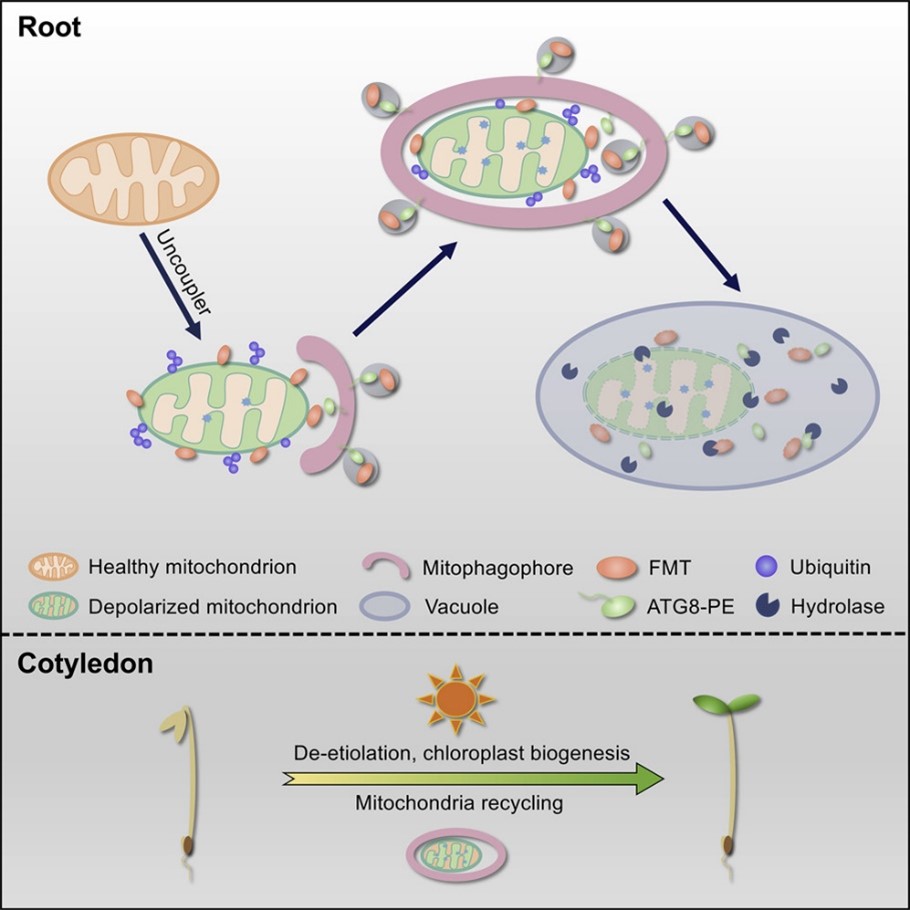
A clustered mitochondria family protein mediates the plant mitophagy (Curr. Biol.)
Plant Science Research WeeklyMitochondria function as cellular powerhouses to generate energy via oxidative phosphorylation and facilitate the synthesis of essential macromolecules. To protect against proteotoxic stress, damaged mitochondria are selectively removed by autophagy via a process known as mitophagy. In mammalian cells,…

Exo70B2 functions as a exocyst subunit in secretion linked to immunity and autophagy (Plant Cell)
Plant Science Research WeeklyThe exocyst is a conserved protein complex that mediates tethering of secretory vesicle to the plasma membrane prior to SNARE-mediated membrane fusion. Exo70 is one of eight subunits and has expanded into 23 homologs in Arabidopsis. Brillada and Teh et al. identified Exo70B2 as a bona fide exocyst subunit…

The peroxisome just updated its profile picture (Nature Comms.)
Plant Science Research Weekly
The ability to utilize stored energy is crucial for organism growth and development. For example, seed storage lipids go through hydrolysis and beta-oxidation to provide energy for seed germination. In this process, beta-oxidation occurs in the peroxisome, a subcellular compartment that houses many…

